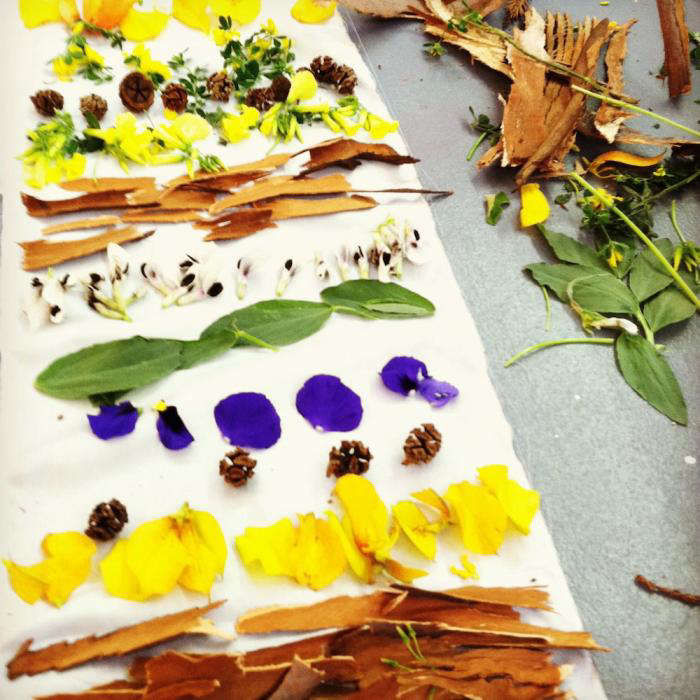

The reason that such seasonal fashions as wearing pastels in summer and brown in autumn became seasonal in the first place was because people relied on natural dyes (from blueberries, say, or eucalyptus bark) to color fabric.
The reason that such seasonal fashions as wearing pastels in summer and brown in autumn became seasonal in the first place was because people relied on natural dyes (from blueberries, say, or eucalyptus bark) to color fabric.
Photography by Sasha Duerr, except where noted.
Photography by Sasha Duerr, except where noted.
In Oakland, California, where she is co-founder of a fibers garden at the California College of Arts, Duerr grows plants like fava beans and Japanese indigo to dye fabrics for her artisan knitwear collection, Adie and George.
In Oakland, California, where she is co-founder of a fibers garden at the California College of Arts, Duerr grows plants like fava beans and Japanese indigo to dye fabrics for her artisan knitwear collection, Adie and George.
Collect petals and leaves to bundle, wrap with fabric, and toss into a dye pot.
Collect petals and leaves to bundle, wrap with fabric, and toss into a dye pot.
Eucalyptus trees, native to Australia but considered invasive in the US, are generally cursed in California for their water consuming ways.
Eucalyptus trees, native to Australia but considered invasive in the US, are generally cursed in California for their water consuming ways.
To dye fabric the blue shade of Duerr’s scarf, use red cabbage. Rinse in a pH neutral soap and cool water; hang to dry.
To dye fabric the blue shade of Duerr’s scarf, use red cabbage. Rinse in a pH neutral soap and cool water; hang to dry.
Image by Katelyn Toth-Fejel.
Image by Katelyn Toth-Fejel.
Cabbage is a litmus test of soil properties. This swath shows more salinity than acidity.
Cabbage is a litmus test of soil properties. This swath shows more salinity than acidity.
These colors come from discarded Valentine’s Day roses and onion skins.
These colors come from discarded Valentine’s Day roses and onion skins.
The garden’s origins: California College of Art fiber artists wanted a place to compost their waste.
The garden’s origins: California College of Art fiber artists wanted a place to compost their waste.
Nasturtium, calendula, and viola headed for the dye pot. Seed bombs created by garden plants gone to seed help spread California natives.
Nasturtium, calendula, and viola headed for the dye pot. Seed bombs created by garden plants gone to seed help spread California natives.
A scarf gets its gray and brown hues from bark and leaves. Materials pulled from the compost bin, such as coffee grounds, onion skins, and avocado pits, also are used for dyes.
A scarf gets its gray and brown hues from bark and leaves. Materials pulled from the compost bin, such as coffee grounds, onion skins, and avocado pits, also are used for dyes.
The Olivia dress, which Duerr made in collaboration with Mr. Larkin of Mr. Larkin Loves You, was dyed with Japanese maple leaves scooped up from the street.
The Olivia dress, which Duerr made in collaboration with Mr. Larkin of Mr. Larkin Loves You, was dyed with Japanese maple leaves scooped up from the street.


